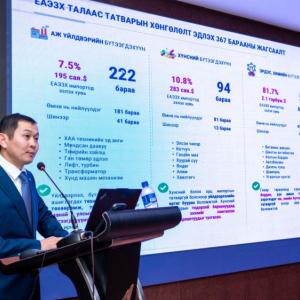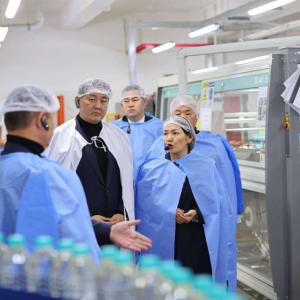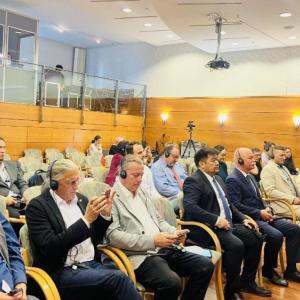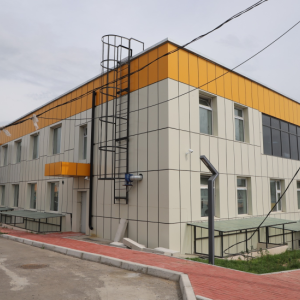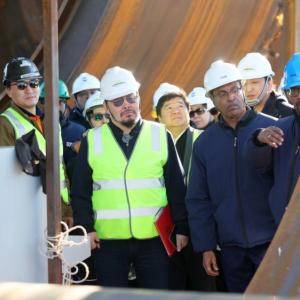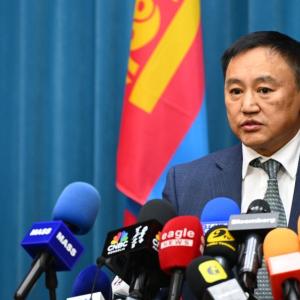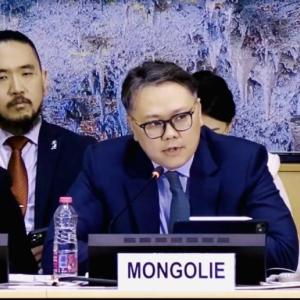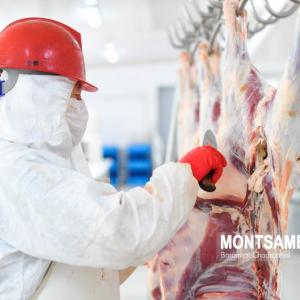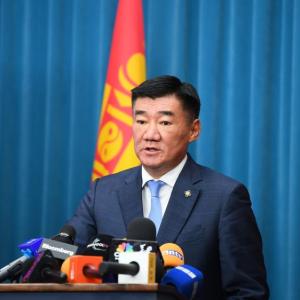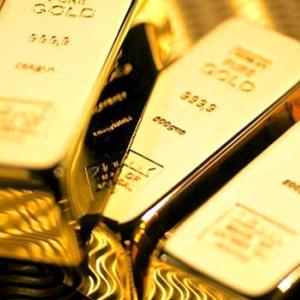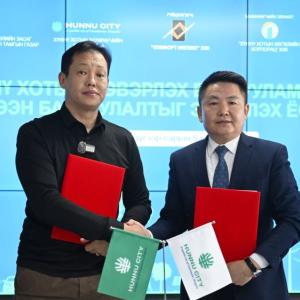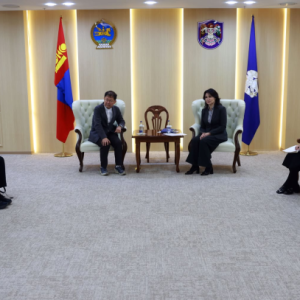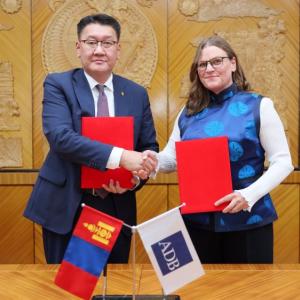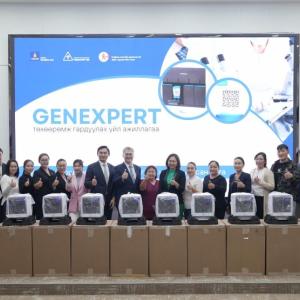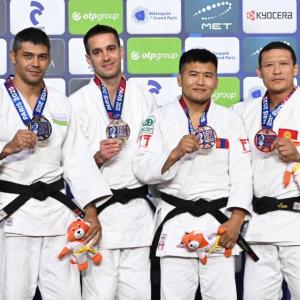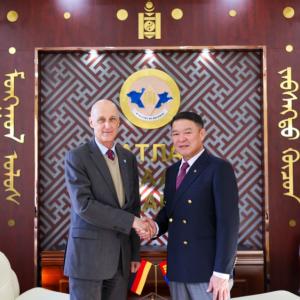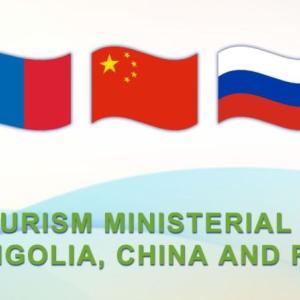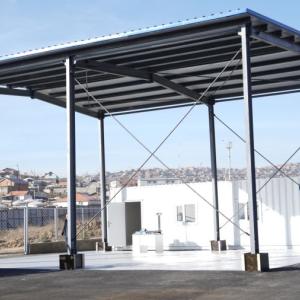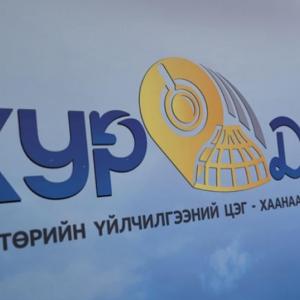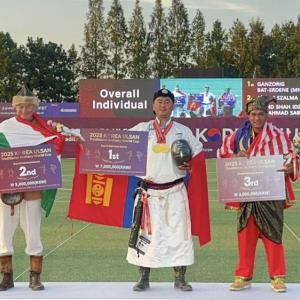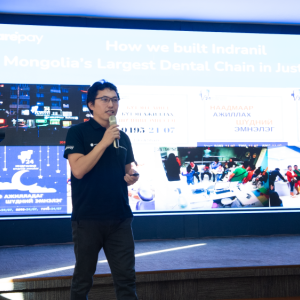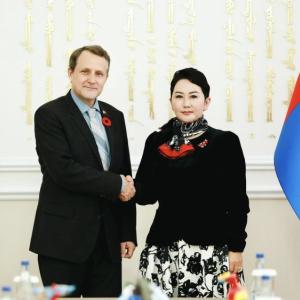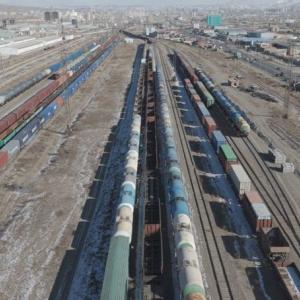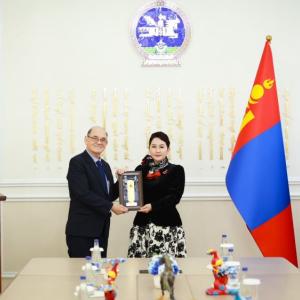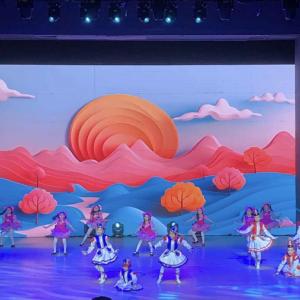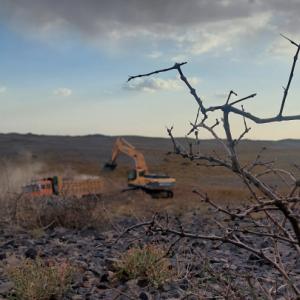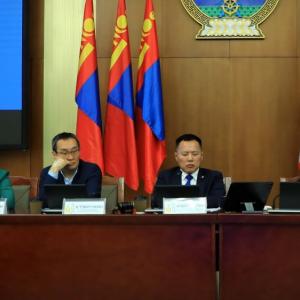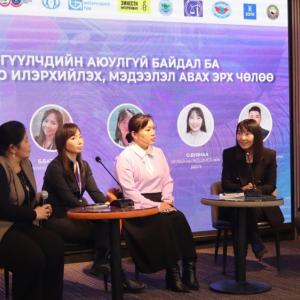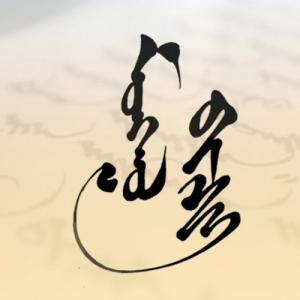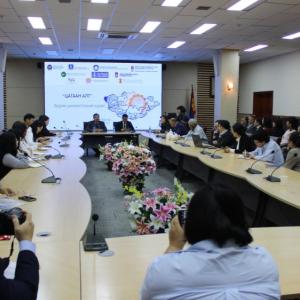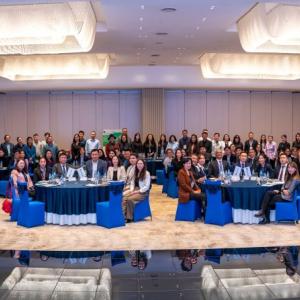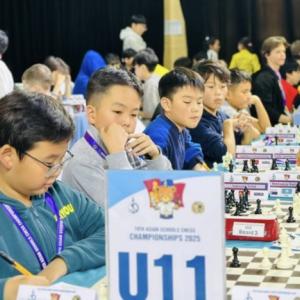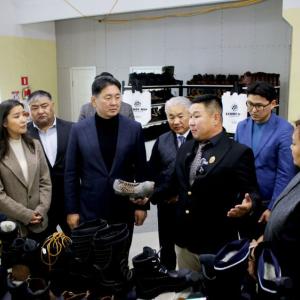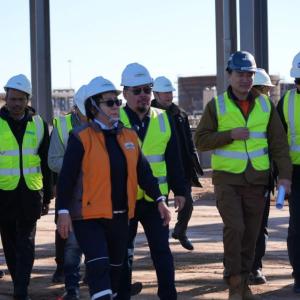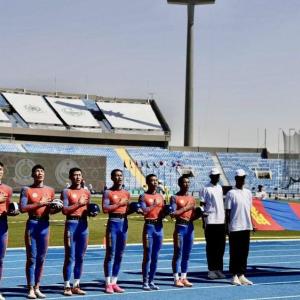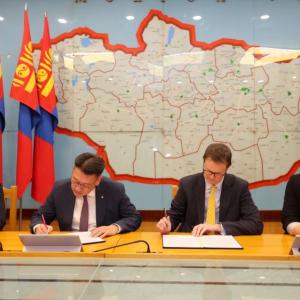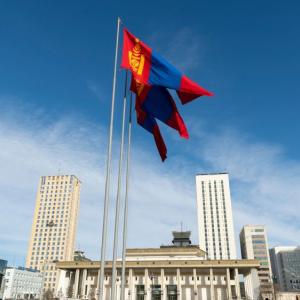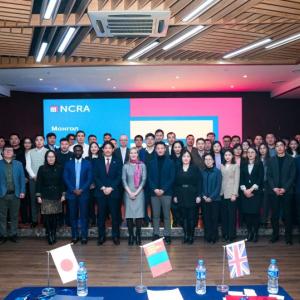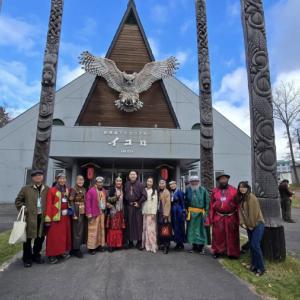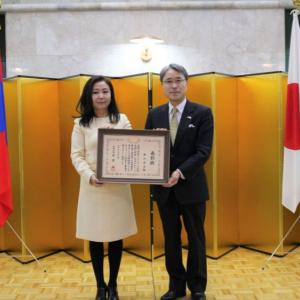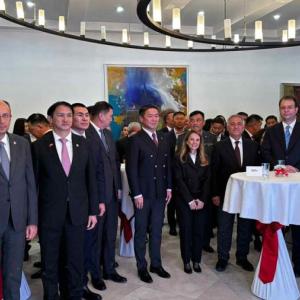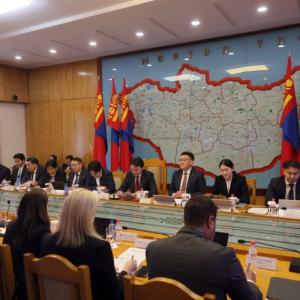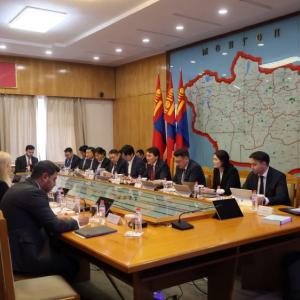Feature exhibits of Kharakhorum Museum
The Mongol Messenger
Ulaanbaatar /MONTSAME/. Despite ancient Mongolians being able to create a large scale civilization, there is little to no documentation and proof about the history they created. In most cases, it is the notes written by foreign travellers and chronicles of neighboring kingdoms and empires that currently serve as crucial research documents. This is largely due to the nomadic culture of Mongolians, not staying in one area for a long time. As a result, the inscriptions written on various boulders and cliffs by our ancestors have remained to this day and age through several hundred years of time. Moreover, the remains of the large city and artifacts discovered through archeological excavations also continue to serve as real “witnesses” of the ancient history and civilization of Mongolia.
One of the most important tangible cultural heritage artifacts is
the remains of the capital city of Karakorum--the capital of the Mongol Empire
that was said to be the largest city of the world during the Middle Ages.
Various archeological research and excavation works conducted by scholars and
researchers throughout the years proved the existence of the remains of
Karakorum city in Orkhon Valley, located in Kharkhorin soum, Uvurkhangai aimag
today.
Thus, with its aims as to preserve and promote historic and
cultural artifacts that relate to the World Heritage - Orkhon Valley Cultural
Landscape and the ancient capital of Karakorum, the Kharakhorum Museum was
established in 2010 with non-refundable aid from the Government of Japan.

Soon after its establishment, 99 artifacts were received from the
Institute of Archeology at the Mongolian Academy of Sciences that were in the
list of artifacts that were considered suitable for the museum, starting its
collection. As of today, a total of 3,128 artifacts have been registered in the
collection of the Kharakhorum Museum, of which over 80 percent is taken by
various archeological findings. 63 of the museum exhibits have also been
registered in the List of Invaluable Historic and Cultural Heritage of
Mongolia. The museum has permanent and temporary exhibition halls as well as
outdoor exhibition space.
Currently, artifacts from the time of Hunnu the first empire of
Mongolia to the First Turkic Khaganate, the Uyghur Khaganate, the Liao dynasty,
the Rouran Khaganate, and the Mongol Empire are being kept at the museum. The
museum collection also keeps some interesting findings stretching from the time
of the Upper Paleolithic period to the 13th-14th century. From the museum
collection, we hereby present eight of the most important artifacts that relate
to Karakorum, the capital city of the Mongol Empire.
THE
LETTER OF GUYUG KHAAN

In the notes of Plano Carpini who
visited Mongolia in 1245, it states that a Russian craftsman named Kozma
crafted a seal for the Great Mongolian Khaan Guyug. The seal imprint can be
found on the letter sent from Guyug Khaan to Roman Pope Innocent IV. The letter
is currently being kept in Vatican City. In the framework of the friendly
relations between Mongolia and Italy, an official copy of the letter was handed
over, which is now being kept as an exhibit at the Kharakhorum Museum.

State envoy Plano Carpini presented
the letter of Roman Pope Innocent IV to the Great Guyug Khaan in the autumn of
1246. The letter had content persuading Guyug Khaan to follow Christianity. Its
reply from the side of Mongolia was written in early November of 1246, then
translated to the languages of Persian and Latin, creating two copies. The
letter was written on a starch paper with 120 cm in length and 20 cm in width.
In his letter to Pope Innocent IV who was said to be the “lord” of the western
world at the time, Guyug Khaan said, “Under the blessings of the eternal blue
sky. May you, religious lord, understand my decree as the Dalai Khan of the
people. Pope, come show your presence before me. No one may be left outside the
Order of the Sky. May the sky decide what follows if you carry wrong
sentiments.”
The letter was verified by stamping the great khaan’s seal in its middle
and bottom right corner. The seal is the only remaining Khasbuu seal of the
Mongol Empire that is kept in its original form.
THE INSCRIPTION MONUMENT OF KARAKORUM

During
the reign of Togoontumur Khaan in 1347, a certain inscription monument was
created and then installed on the back of a large turtle statue that stands at
the remains of Karakorum city.
The
monument has inscriptions of Mongolian script on one side, and those of Chinese
on the other. Researchers
later discovered that the inscriptions carried the same meaning despite being
written in two different languages. The monument is estimated to have been
broken during the attack of Ming dynasty soldiers in 1380. The broken pieces of the monument
were later moved inside the gates of Erdene Zuu Monastery.
The inscription tells about
various historic events, such as the decision of Chinggis Khaan to establish
the capital city in Orkhon Valley, the construction of the ‘Ten Thousand Tranquillity’
palace during the reign of Ogedei Khaan, the construction of the five-story
Great Buddhist Temple as per the decree of Munkh Khaan in 1256 as well as its
significance nationwide and and how someone was specially appointed by
Mongolian kings each time repairs were required, and a statue erected under the
name, ‘the Pavilion to bring glory to Yuan dynasty’, in the temple as per the
decree of Togoontumur Khaan.

The discovery of the monument
served as proof for the remains near the Erdene Zuu Monastery to be the remains
of the capital of the Mongol Empire. It also proved the article about Chinggis
Khaan’s decision to make Karakorum the capital city in 1220 in ‘the History of
Yuan’.
THE SEAL WITH ‘PHAGS-PA SCRIPT

The seal with ‘phags-pa script (ancient Mongolian square script)
that was used by a Finance Ministry official of the Bilegt Khaan Ayushidara,
who was enthroned in 1371, is one of the valuable artifacts of Kharakhorum
Museum.
Although the
seal’s craft and size were similar to those of other seals that were used
during the Yuan dynasty, it had distinct features that were not found in others
that were discovered. As according to the traditions of the time, the date and
location of where the seal was made is written in Chinese script at its top.
From how the script is deciphered as ‘March of the 2nd year of Xuanguang’,
researchers consider the seal to have been made around the year of 1372, and to
have direct correlations to the reign of Bilegt Khaan Ayushiridara, the last
successor to the throne of Yuan dynasty.
With an oval-shaped handle,
the bronze square seal weighs 730 grams. Three lines of the ancient square
script are engraved side by side in an area of 4.8 cm x 4.8 cm inside of a
square border that is 0.5 cm in width. The seal was discovered during an
archeological excavation at the remains of Kharkhorum city conducted by a
Mongolian-German joint research expedition team in 2001.
PORCELAIN WARE

In 2003, the Mongolian-German
joint research expedition team discovered an intricately crafted porcelain that
was made with fine-grained white clay and semi-transparent enamel with a blue
tint.
The artifact was initially
considered as a clay lion. However, it was later proven incorrect, and has thus
been considered to be a sculpture of a mythical creature.
The sculpture is estimated to
be from the time of Song and Yuan dynasties. The mythical creature is depicted
as it is sitting on a platform with its right paw on a ball entangled in a silk
ribbon. Its head is also raised and depicted in a way that it is looking over
its right shoulder. A bell is also tied around its neck, with the ribbon tied
in a large bow on the back.
COINS OF KINGS

As a result of the Mongolian
conquests, the establishment of an empire covering both Asia and Europe had a
significant effect on the creation of a free global trade region. With the
successful conquest of Khwarazm, Chinggis Khaan’s power over countries with the
tradition of manufacturing coins had a crucial impact in manufacturing coins
with the names of the Great Khaans.
Throughout the archeological
research done from 2000 to 2005, over 300 coins were discovered from a small
area near the center of Karakorum city. The coins are now being kept at the
Great Hall of the Kharakhorum Museum. Most of the coins have Chinese script on
them, while a few have the ancient ‘phags-pa script, and 9 silver coins have
Arabian script. The discovery of various coins, such as silver coins of Central
Asia, coins of Mongolian Khaans from the furthest regions of China and India,
and silver coins made in the Golden Horde, from a site named Maamuu Tolgoi near
Kharkhorum proves that the intercontinental trade covered a wide range.

From
the coins discovered thus far, a particular silver coin with Arabian script
made in Karakorum around 1237-1238 is considered as the rarest and the most
valuable exhibit. The coin’s inscription of Karakorum city serves as the
earliest artifact mentioning the name of the city. The word, ‘Allah’, is
inscribed on one side of the coin, while the ‘Degere’ seal of Ogedei Khaan is
found on the other side. In the middle of the coin, the Arabic words, ‘Al Imam
Al Azam’, can be found, which means ‘Great Khaan’. The symbol of Cintamani, a
precious jewel in Buddhist traditions, is also engraved on the right side of
the inscription.
KALAVINKA SCULPTURE

Numerous porcelain and clay
sculptures as well as a bronze mirror that may have been not only made in Karakorum
city, but also imported from foreign countries through trade take a n important
place in the museum collection. These interesting artifacts also include
depiction of an Egyptian pharaoh and sculptures of mythical creatures and the
kalavinka bird.
In 2005, about 20 clay shards
were found by a citizen of Kharkhorin soum, Uvurkhangai aimag named N.Odkhuu
and his son O.Angaragsuren from a site named Khundlun Bulag near Kharkhorin soum.
The most eye-catching shards
were those of a mythical creature sculpture with the upper body of a human and
the lower body of a bird. Its thigh, wings, and tail covered in feathers,
claws, top part of its hair, folds in its clothing, and its base were found
among the shards.

About
the kalavinka sculpture, archeologist, Professor D.Tseveendorj said, “Nothing
similar to the sculpture has been discovered in Mongolia before. Although it
may seem similar to those of angels in Europe, it also has its own unique
features,” and defined the sculpture as an outstanding creature reflecting the
cultural relations of the east and west. Furthermore, the angel blowing a horn
at the top of the Silver Tree that stands in front of the Palace of Munkh Khaan
designed by French goldsmith Guillaume Bouchier is also considered to hold
similar features as the clay kalavinka sculpture. Thus, the artifact serves as
an important research fact to determine the appearance of the “angel” that
stood on top of the silver tree.
THE MONUMENT WITH SOYOMBO INSCRIPTION

The monument with soyombo
inscription is a valued artifact for research in religious groups that lived in
Karakorum city as well as the history of mosques. Its inscription tells about a
mosque that was built in Karakorum in Persian. The monument was put into
scientific circulation by the Orkhon research team led by Russian academician
V.V.Radlov, with the ‘Atlas of the Antiquities of Mongolia’ published in 1892.
The artifact that is also called as the monument with Persian inscriptions was
being kept inside the gates of Erdene Zuu Monastery. With a rounded edge at the
top and a rectangular shape, it has 39 lines of inscriptions in Arabic and
Persian.
Researchers believe that the
local Muslims that lived in Karakorum during the time of the Yuan dynasty in
the first half of the 16th century erected the monument. Monks of the Erdene
Zuu Monastery were the ones to engrave the soyombo on top later on. As a
result, some of the letters became too blurry to be read. On the back side of
the monument, the six syllables ‘Om mani padme hum’ have been engraved in
Mongolian script.
The only stone artifact with
the Soyombo script that was created by Undur Gegeen Zanabazar in 1686 is the
monument. Thus, it was added to the List of Invaluable Historic and Cultural
Heritage of Mongolia as according to the cabinet resolution no.227 of June 26,
2013.
THE STATUE OF A WOMAN WITH BOGTAG HEADGEAR
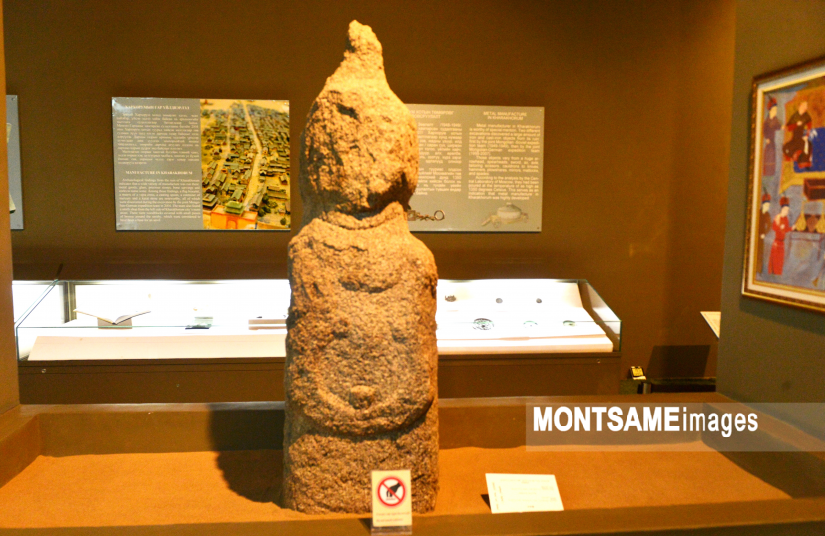
Another important statue from
the time of the Mongol Empire is currently being kept at the Kharakhorum
Museum.
Its features point towards the
statue being the depiction of a woman from the bogtag headgear that used to be
worn by Mongolian queens during the ancient times. Researchers believe that the
statue might be a depiction of ancient queens. The artifact was found from a
site named Khushuun Denj in Kharkhorin soum, Uvurkhangai aimag. It is
considered as a peculiar statue of a human as statues with a woman’s figure are
rarely found. As one of the few artifacts depicting the ‘bogtag’ headgear that
is an essential part of traditional female attire, the statue is considered as
highly valuable heritage for its historic significance.
AMITABHA

Among the dozens of tsatsa
cones, sculptures of Buddha made of clay, architectural ornaments, and small
offering bowls, a clay sculpture of Amitabha Buddha was found. The sculpture
was found near an area where numerous tsatsa cones were also found. A sculpture
of the Five Dhyani Buddhas was discovered from the particular area, of which Amitabha
is worshipped as the Buddha of the West. The symbolism behind the depiction of
the Buddha meditating is said to resolve greed and give one the mindset of
generosity.
The latest sculpture of the
Amitabha was created by Undur Gegeen Zanabazar in the second half of the 17th
century. Made of bronze with a hollow interior and gold coating, the sculpture
was registered in the list of invaluable exhibits in 1995. As for the clay
sculpture being kept at the Kharakhorum Museum, it is an intricately crafted
creation that proves the influence of various religions in the ancient
Mongolian capital alongside being an important artifact for research on
Buddhist temples.
B.Altankhuyag
Photography by
N.Batbayar
 Ulaanbaatar
Ulaanbaatar












